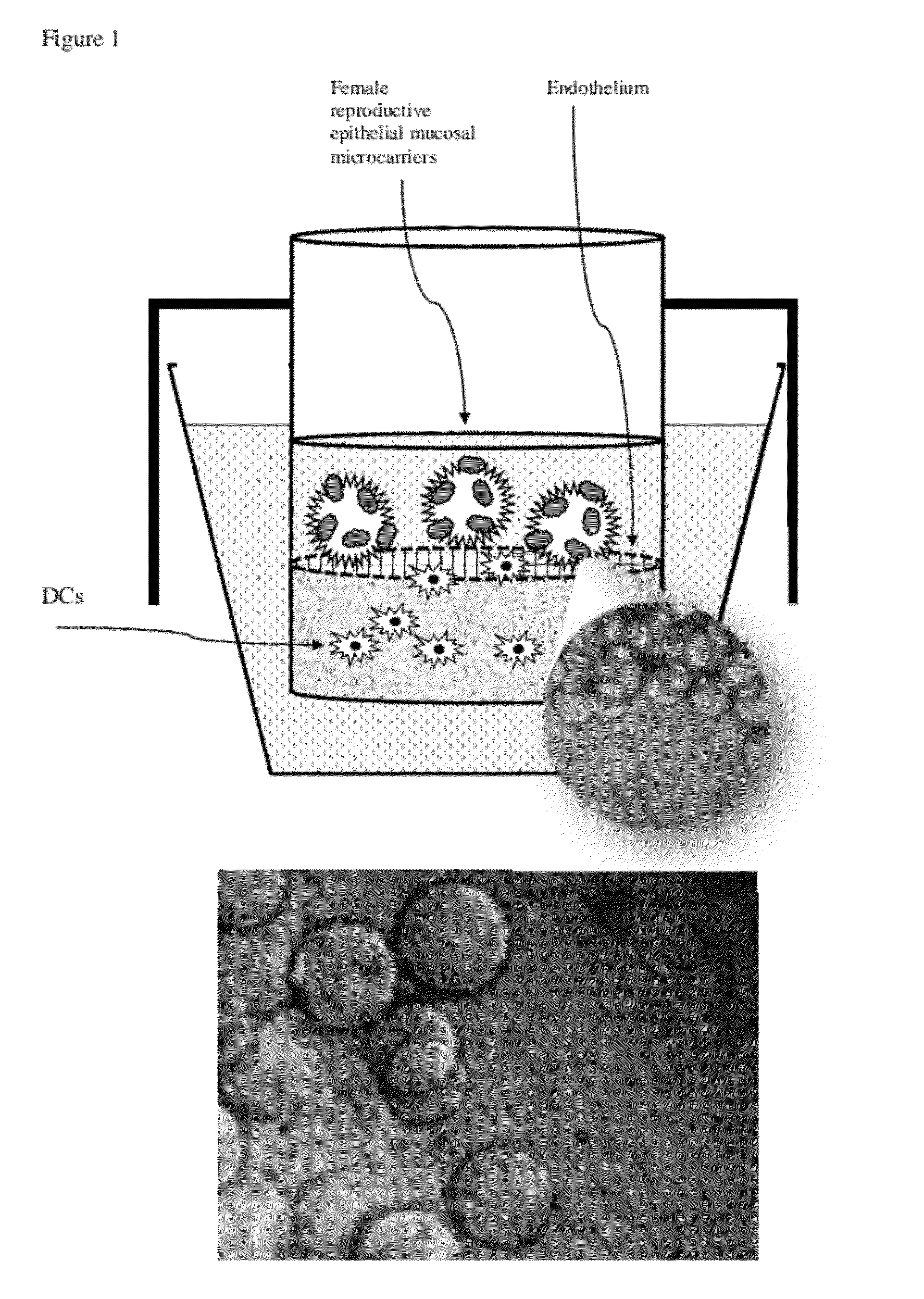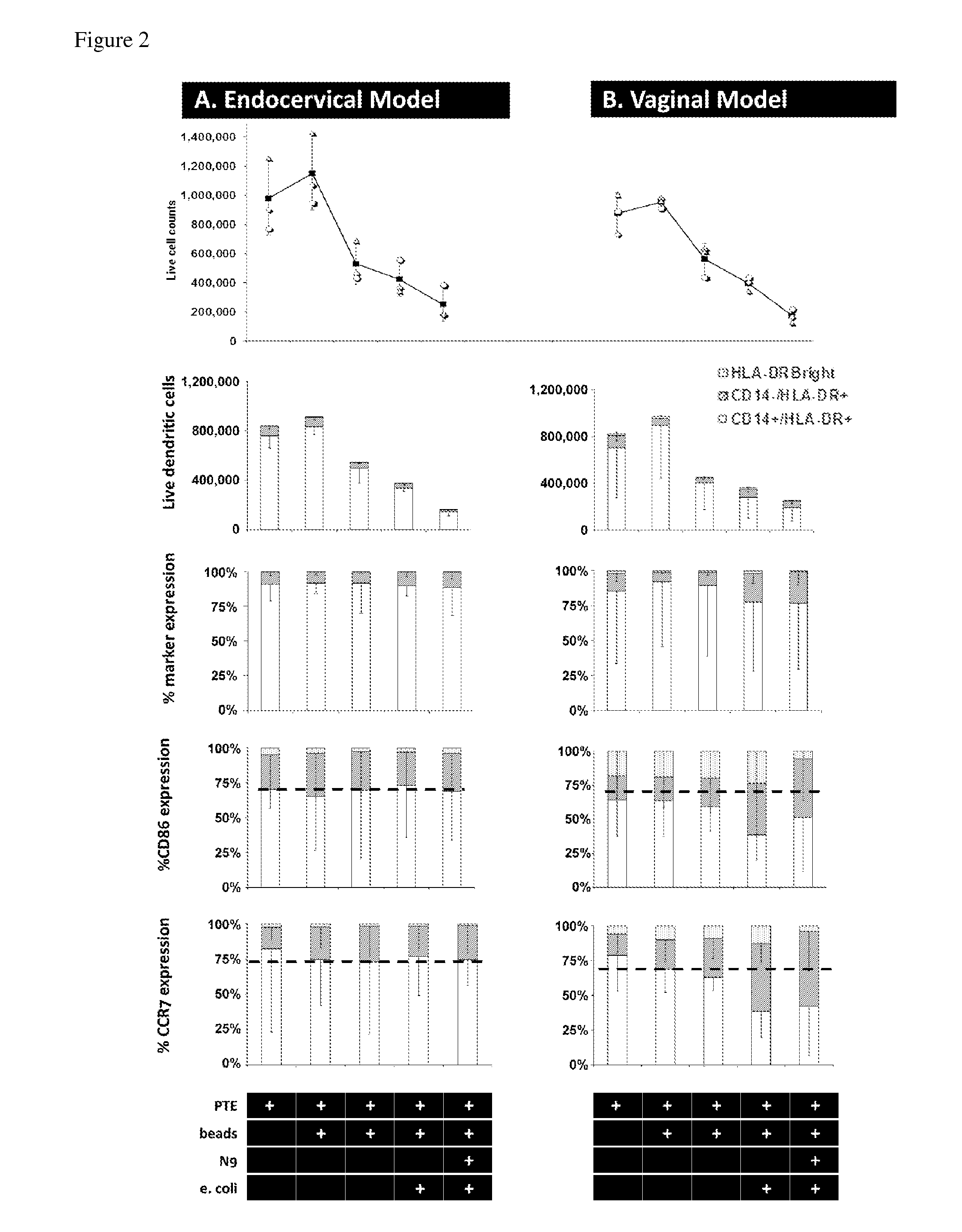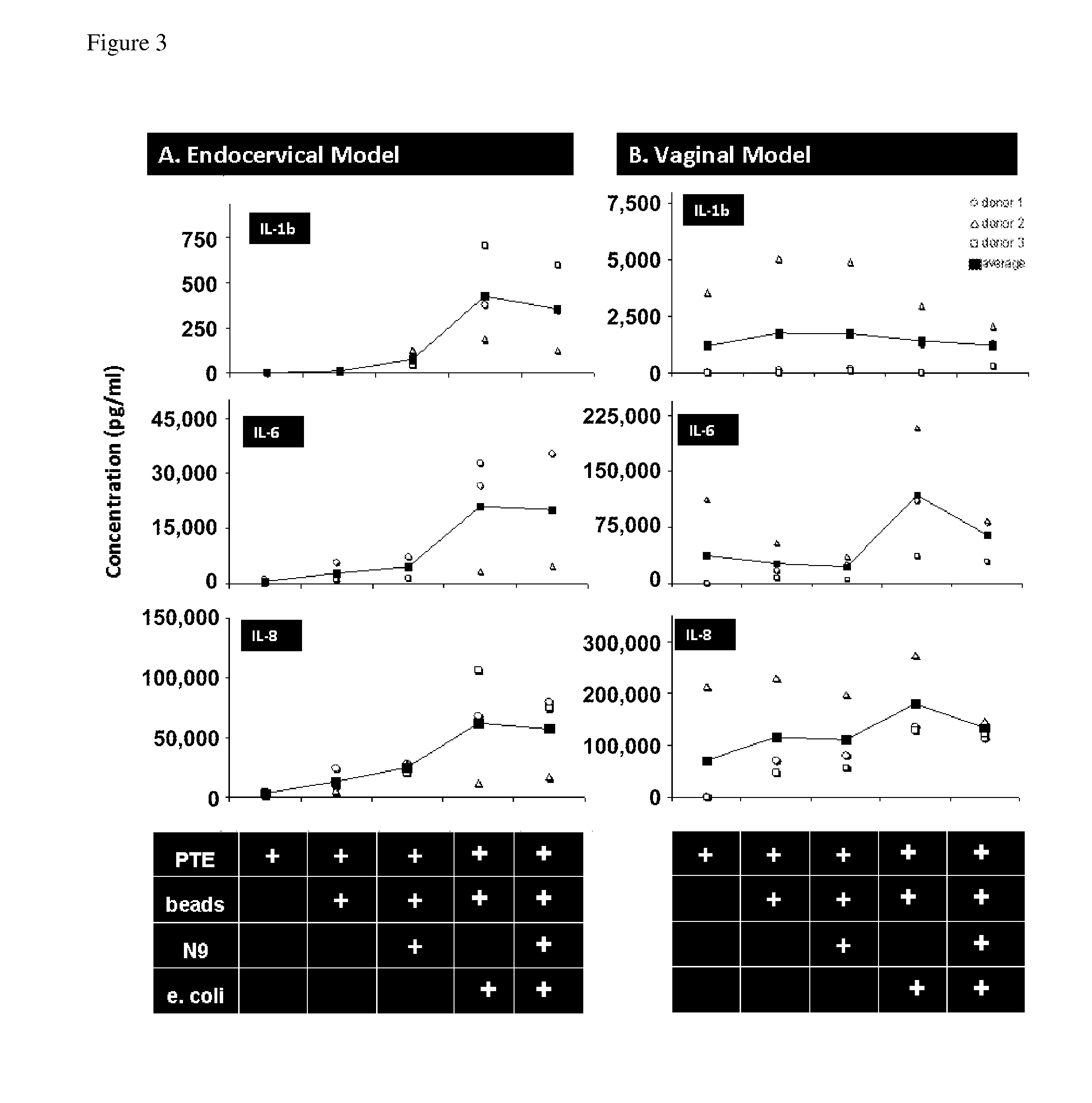In vitro urogenital co-culture models
a co-culture model and urogenital technology, applied in the field of in vitro urogenital co-culture models, can solve the problems of limited anatomical replication of physiological tissue, loss of t and b cell viability and function, and epidemic proportions of sexually transmitted infections
- Summary
- Abstract
- Description
- Claims
- Application Information
AI Technical Summary
Benefits of technology
Problems solved by technology
Method used
Image
Examples
example 1
Summary of the Technique
[0046]Our experimental design of the MIMIC® co-culture of RWV bioreactor-grown epithelial tissue from selected female reproductive tract tested the efficacy of the differentiated epithelia to pick up and present antigen (FIG. 1). RWV-cultured female reproductive microcarriers of differentiated vaginal and endocervical mucosa were exposed to microbicide / spermicide and bacterial antigen and then introduced to the APC-containing PTE module to study the innate immune responses to Nonoxynol-9 and E. coli bioparticulate treatments.
Production of Vaginal Tissue Microcarriers and Endocervical Tissue Microcarriers
[0047]Approximately 3.5-week cultured vaginal tissue aggregates and endocervical tissue aggregates were used to mimic the local mucosal tissue of the female reproductive vaginal and endocervical regions. Cell-bearing microcarrier beads were prepared as follows. Collagen-coated Cytodex beads (Sigma) composed of dextran and having an average size of ˜60-87 micro...
PUM
 Login to View More
Login to View More Abstract
Description
Claims
Application Information
 Login to View More
Login to View More - R&D
- Intellectual Property
- Life Sciences
- Materials
- Tech Scout
- Unparalleled Data Quality
- Higher Quality Content
- 60% Fewer Hallucinations
Browse by: Latest US Patents, China's latest patents, Technical Efficacy Thesaurus, Application Domain, Technology Topic, Popular Technical Reports.
© 2025 PatSnap. All rights reserved.Legal|Privacy policy|Modern Slavery Act Transparency Statement|Sitemap|About US| Contact US: help@patsnap.com



